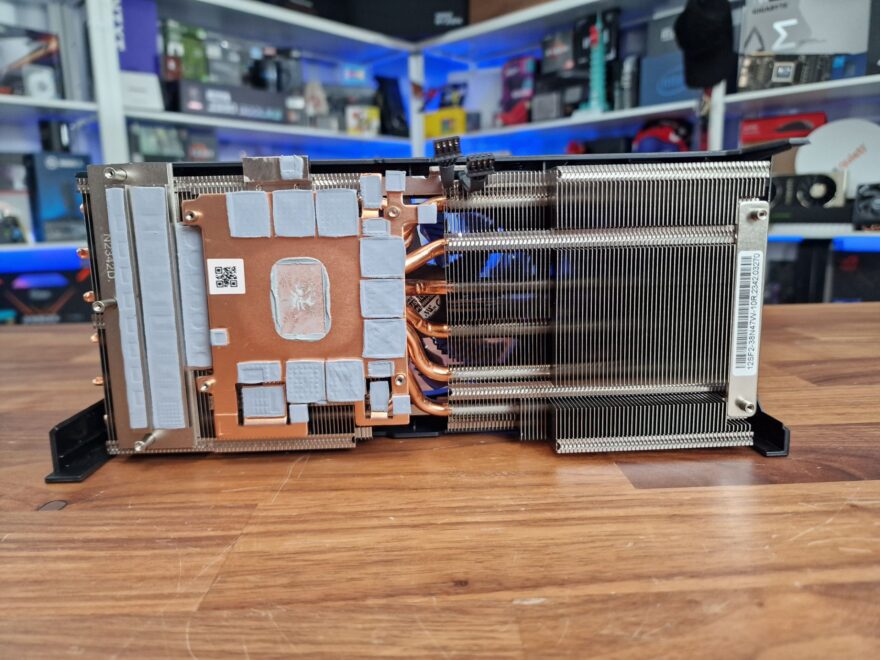Gigabyte RTX 4070 Ti SUPER WINDFORCE OC Graphics Card Review
Peter Donnell / 4 months ago
A Closer Look
Gigabyte cards do tend to look very similar, as they use largely the same cooler and shroud design throughout their range, which has always helped them to remain competitive on price, while ensuring more reliable build quality and consistent performance. Despite being obviously smaller than the top-end RTX cards, it still looks pretty great, with the grey making a nice contrast to the visible copper heatpipes on the interior.
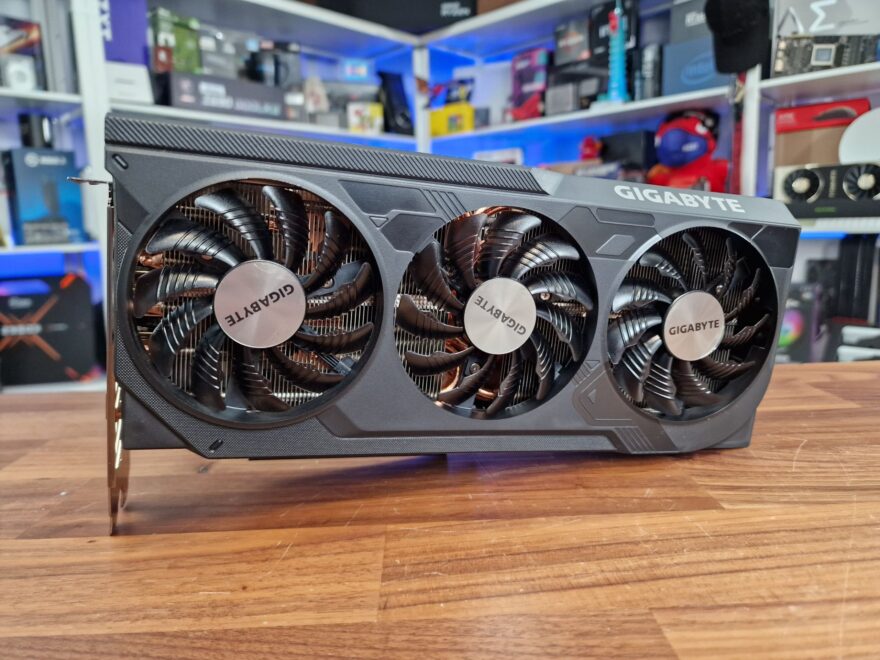
The fan configuration is still the triple-fan design they often use, where the middle fan spins in the opposite direction to the outside fans, creating a vortex of air within the card. All the fans support zero RPM modes and are individually PWM-controlled to cool each part of the GPU and heatsink.
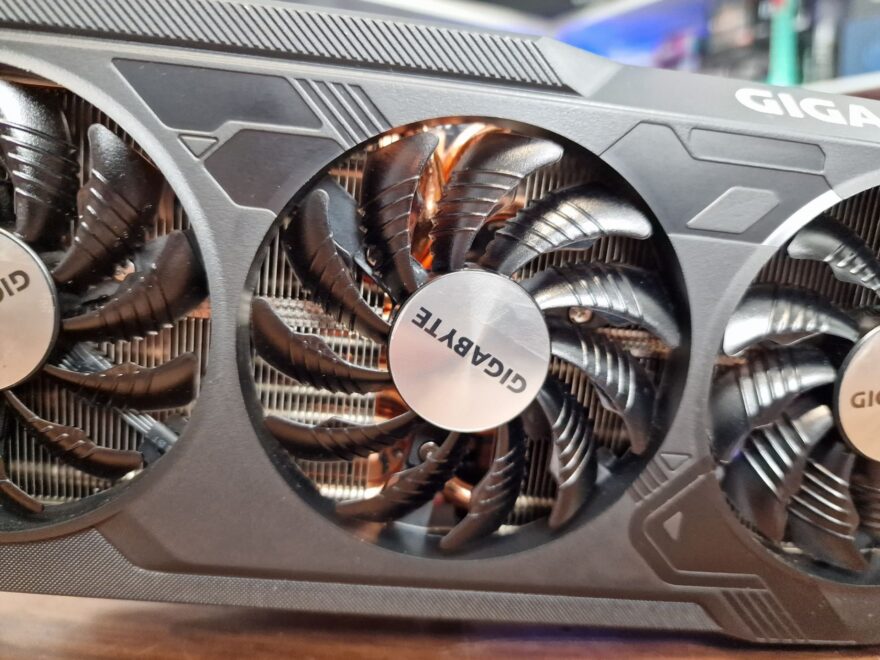
Down the side of the card, you can see the heatsink is pretty hefty, with tightly packed fins and a thicker card design overall to allow for the increased surface area of the cooler.
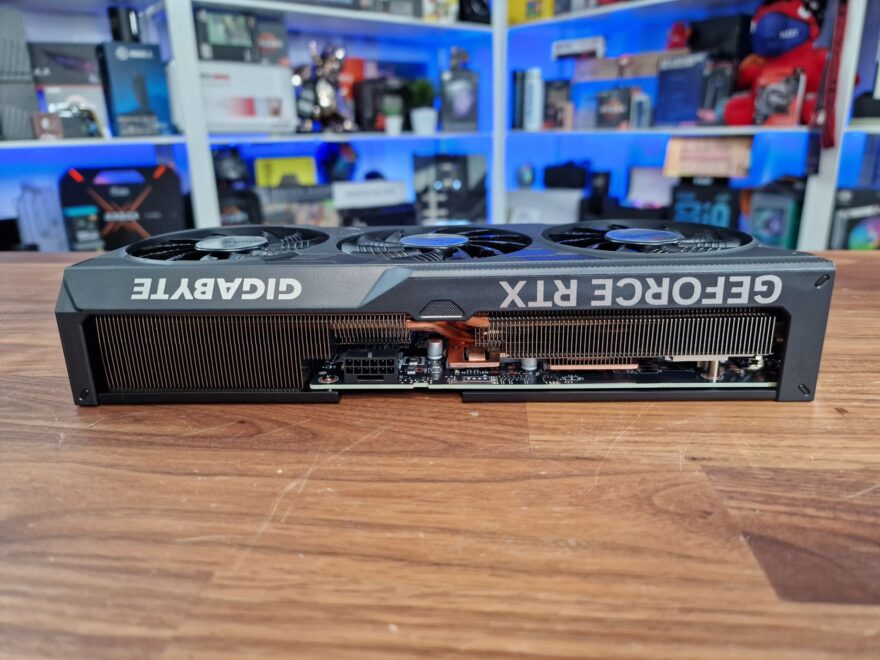
On the side of the cooler, you’ll also find the ever-popular (for better or for worse) 12VHPWR connector.
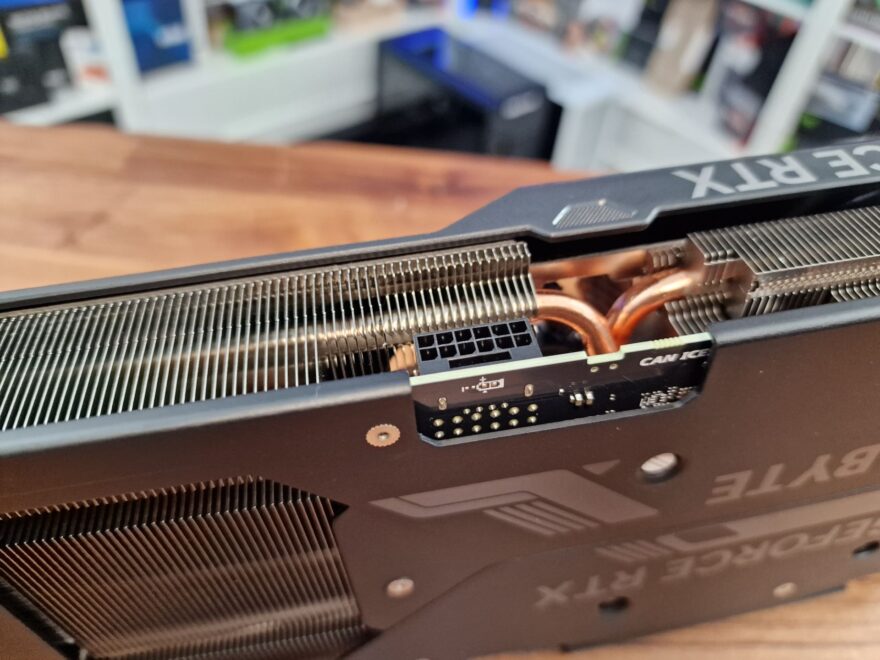
At the back, there’s some ventilation, which is largely for show as the card vents heat sideways mostly. There are three DisplayPort and a single HDMI connector too, which is more than enough for most PC users.
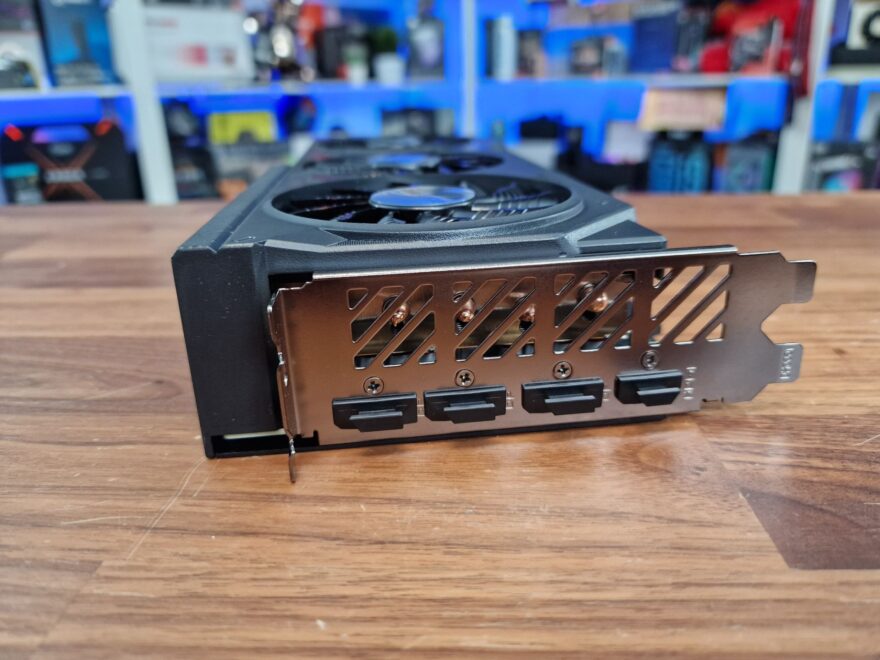
One thing I do love is this premium backplate design, which is made from thick metal, and features a nice printed graphic, and most importantly, a huge ventilated section of the thickest part of the heatsink, allowing it to exhaust lots of heat up and away from the GPU.
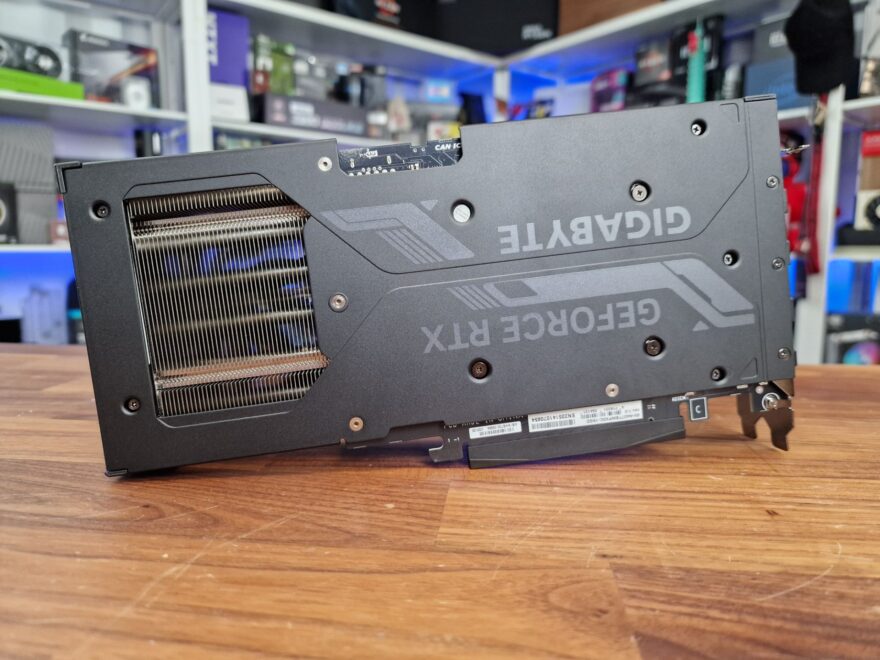
I get Deux Ex vibes from this heatink; it’s simple, but just really nicely done.
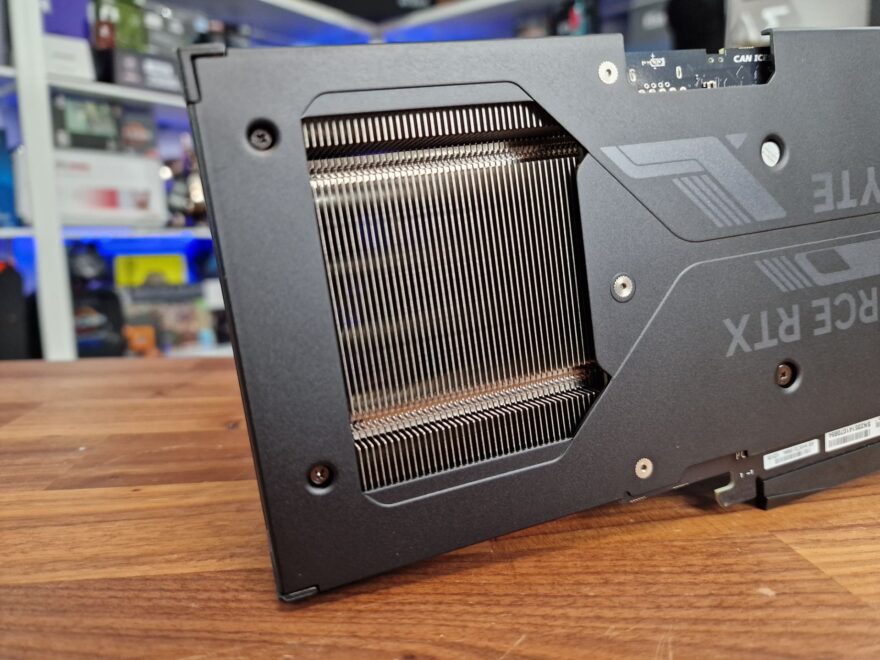
Tearing down the cooler, there’s quite a lot going on with this card, and it’s clear to me now the PCB is the same as the RTX 4070 SUPER (non-TI), which had two unused VRAM slots and few spots for additional capacitors and phases in the VRM, which are now filled in on the Super Ti.
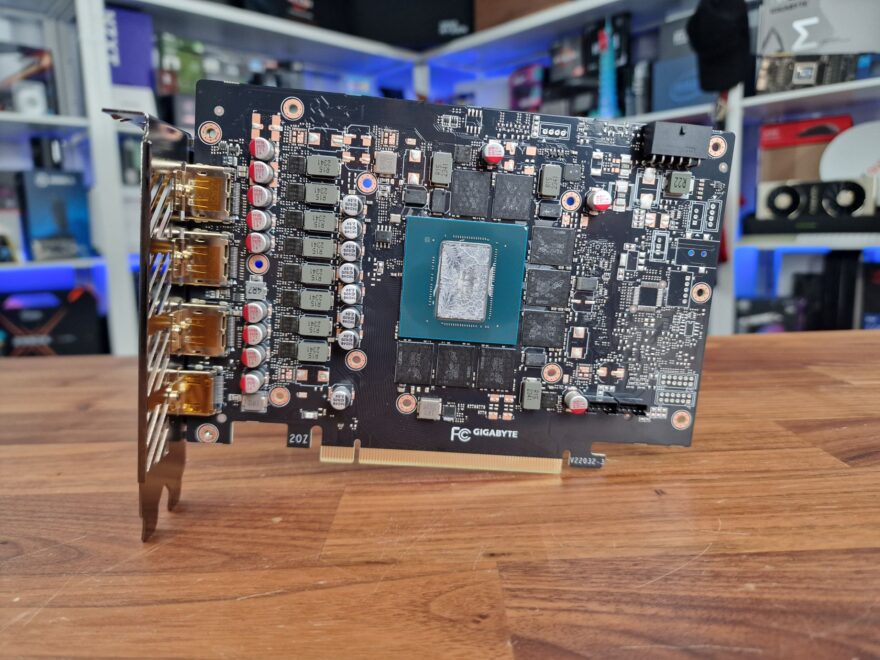
There are 8 x 2 GB memory ICs here, giving the Ti 16GB of RAM in total vs the 12 GB found on the non-Ti variants.
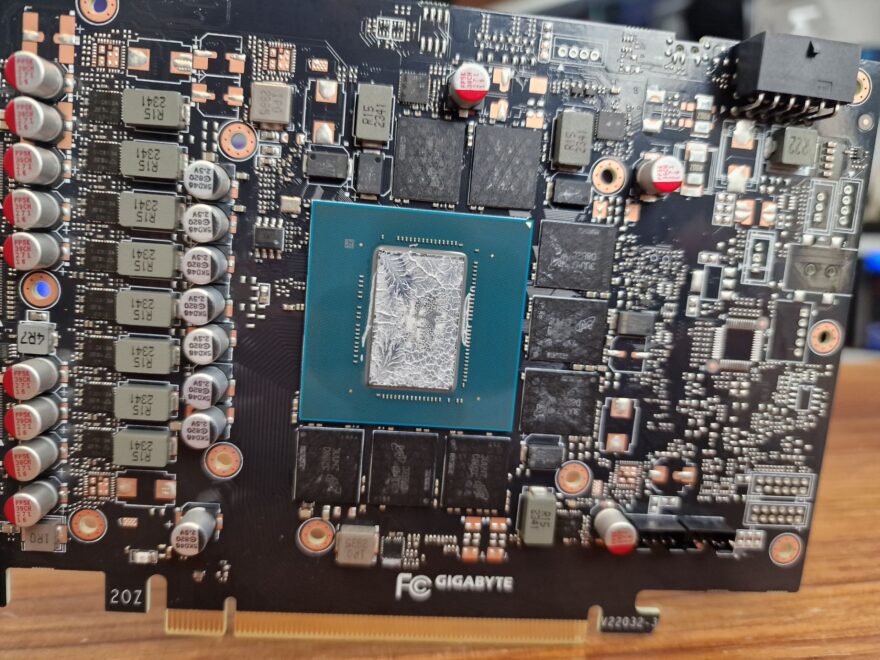
There’s an increased number of capacitors too, quite a big increase actually with a more comprehensive set of phases to deal with the increased power intake of the card and higher TDP of the chipset itself. Plus, we need to factor in that this is an OC edition of the card, so it’s pushed that little bit higher up the power scale too.
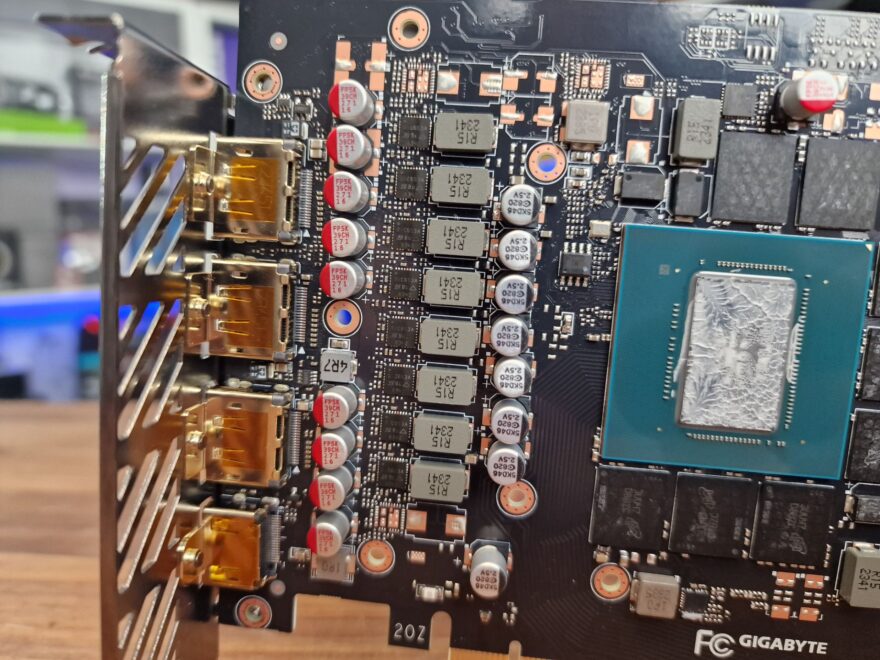
The backplate is a single-piece construction with a screw-through design so that it doesn’t put additional strain on the PCB of the card.
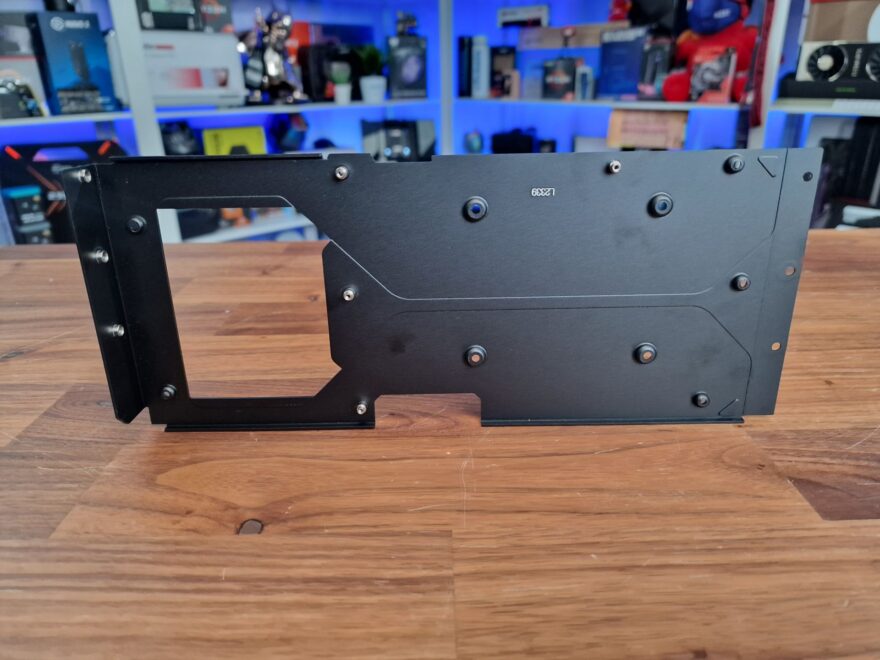
The heatsink is comprehensive, with an oversized copper cold plate that covers the chipset and VRAM, with lots of smaller thermal pads ensuring any capacitors or chokes around that area are making contact, and a large strip of thermal material towards the back for the phases over a large nickel-plated contact plate, all of which feeds into six thick heat pipes and through the two-part radiator design.
